C. V Jawahar
Towards MOOCs for Lip Reading: Using Synthetic Talking Heads to Train Humans in Lipreading at Scale
Aug 21, 2022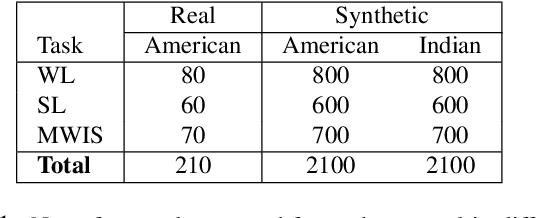

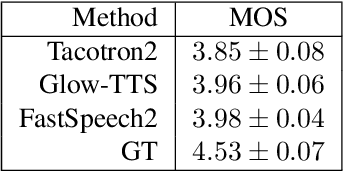
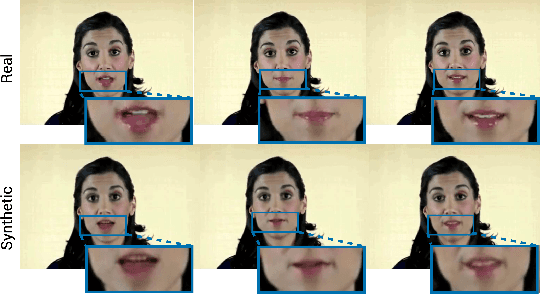
Abstract:Many people with some form of hearing loss consider lipreading as their primary mode of day-to-day communication. However, finding resources to learn or improve one's lipreading skills can be challenging. This is further exacerbated in COVID$19$ pandemic due to restrictions on direct interactions with peers and speech therapists. Today, online MOOCs platforms like Coursera and Udemy have become the most effective form of training for many kinds of skill development. However, online lipreading resources are scarce as creating such resources is an extensive process needing months of manual effort to record hired actors. Because of the manual pipeline, such platforms are also limited in the vocabulary, supported languages, accents, and speakers, and have a high usage cost. In this work, we investigate the possibility of replacing real human talking videos with synthetically generated videos. Synthetic data can be used to easily incorporate larger vocabularies, variations in accent, and even local languages, and many speakers. We propose an end-to-end automated pipeline to develop such a platform using state-of-the-art talking heading video generator networks, text-to-speech models, and computer vision techniques. We then perform an extensive human evaluation using carefully thought out lipreading exercises to validate the quality of our designed platform against the existing lipreading platforms. Our studies concretely point towards the potential of our approach for the development of a large-scale lipreading MOOCs platform that can impact millions of people with hearing loss.
InfographicVQA
Apr 26, 2021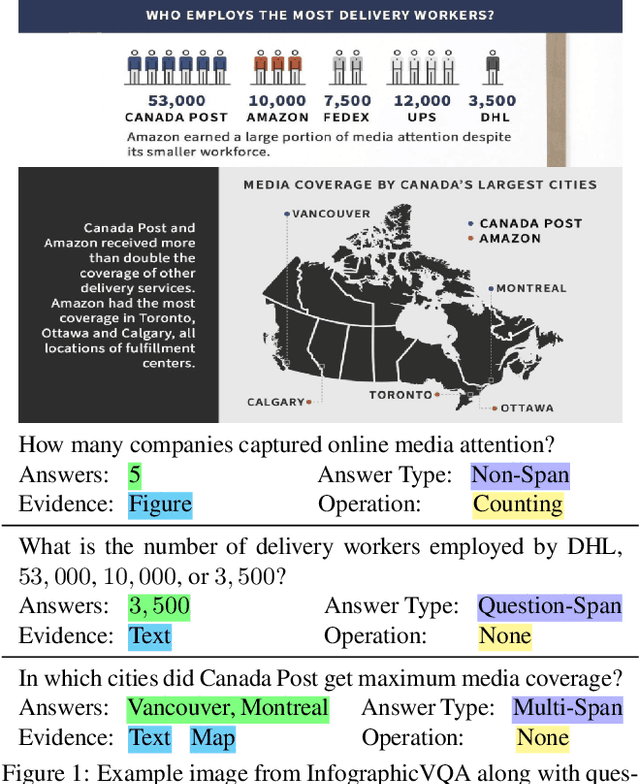


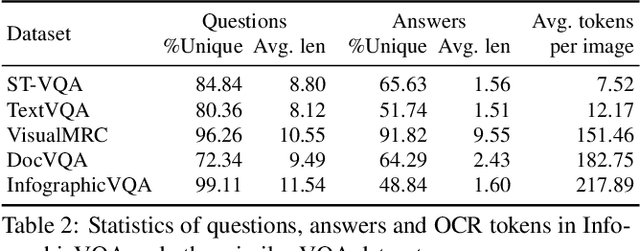
Abstract:Infographics are documents designed to effectively communicate information using a combination of textual, graphical and visual elements. In this work, we explore the automatic understanding of infographic images by using Visual Question Answering technique.To this end, we present InfographicVQA, a new dataset that comprises a diverse collection of infographics along with natural language questions and answers annotations. The collected questions require methods to jointly reason over the document layout, textual content, graphical elements, and data visualizations. We curate the dataset with emphasis on questions that require elementary reasoning and basic arithmetic skills. Finally, we evaluate two strong baselines based on state of the art multi-modal VQA models, and establish baseline performance for the new task. The dataset, code and leaderboard will be made available at http://docvqa.org
 Add to Chrome
Add to Chrome Add to Firefox
Add to Firefox Add to Edge
Add to Edge